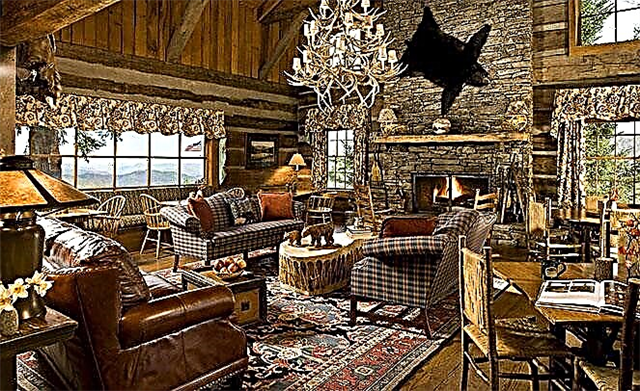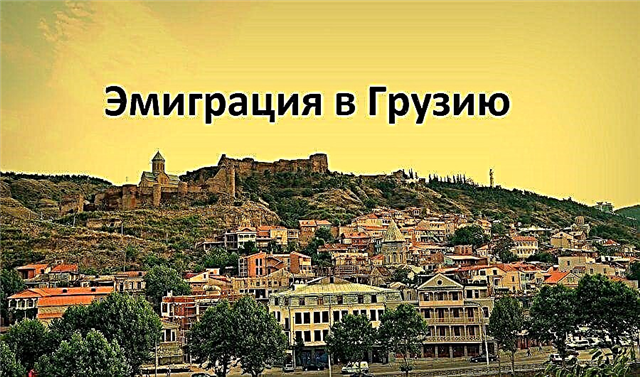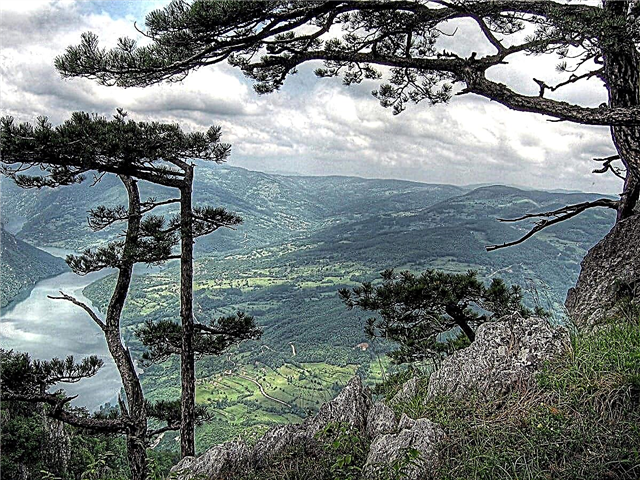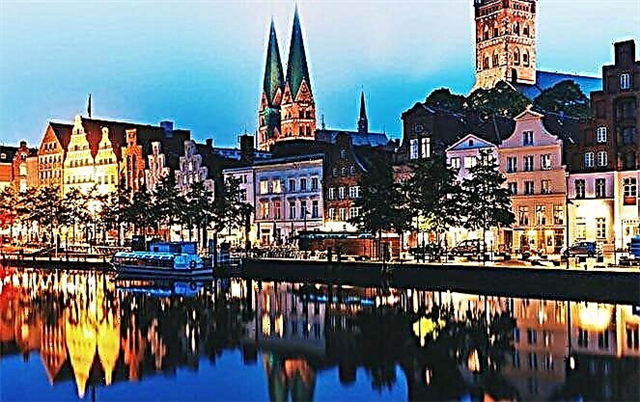Lubeck is an amazing city with a long history located in the northern part of Germany. Due to its proximity to the Baltic Sea, the port city was actively developing, and in the XIV-XV centuries, during the heyday of the Hanseatic League, it was considered the center of trade in northwestern Europe. The temples, cathedrals and mosques of Lubeck keep the history of the Hansa in them. The old Gothic-style red brick buildings are breathtaking. Let's get acquainted with the most striking examples of the brick Gothic of the city.

How Lubeck can interest tourists
The city's fascinating centuries-old history, architecture and entertainment draws tourists from all over the world. Travelers will find ancient streets, about a thousand historical buildings - medieval merchant houses, old Gothic churches. In 1987, UNESCO recognized the city as a World Heritage Site.
The main attraction is the medieval Altstadt (old town), located on an island on the Trava River. In the northern part of the historic center, Koberg deserves attention. Lubeck's Gänge (passages and courtyards) are also a must-see - streets with small houses and a charming atmosphere.
The symbol of Lübeck and the Hanseatic League is the Holstentor (Holstein Gate), which consists of two towers connected by a central span. The museum is located here.
In addition, the city is proud of museums of the history of marzipan, theater puppets. Also in Lubeck there is a Museum of Art History and Cultural History, the Museum of St. Anne.
Church of St. Jacob
Not far from the Market Square on Breitestraße is the Church of St. Jacob, one of the five Lutheran churches in the historic center of Lübeck. It was built in the XIV century on the site of a burnt wooden basilica. It is noteworthy that four copper balls are installed on the bell tower of the temple, and the base of the cone-shaped roof has the shape of a semicircular bulge.

The original design, the interiors of the temple were not damaged during the war. For six centuries, the doors of the Church of St. Jacob have been open to the inhabitants of Lübeck and its guests.
The cathedral has long been considered "the church of sailors and fishermen". Since Lubeck was the center of maritime trade, many merchant ships came there. After difficult campaigns, the sailors thanked the Almighty for being alive, and before going out to sea they asked for a favorable wind and protection from pirates and the sea.
In the northern part of the temple there is a memorial chapel. A rescue boat from the sunken barque "Pamir" is installed in it. On September 22, 1957, a four-masted merchant ship was caught in a terrible storm. Of the 86 crew members, only six survived. In 2007, the boat from the barque Pamir, which saved six lives, was declared a National Memorial. People come here to honor the memory of all the sailors whose life was tragically cut short at sea.
The Church of St. Jacob protects not only sailors, but also pilgrims. It is believed that the temple is on the way to the Spanish city of Santiago de Compostella, where, according to legend, Saint James is buried. Pilgrims from Scandinavia, who followed to the grave of one of the apostles of Christ, stopped at the territory of the temple.
Their difficult path passed through all of Europe, and was called "The Way of St. James", which is why, most likely, the church got its name. The hotel for pilgrims still exists.
Wall paintings dating from the XIV century, the altar of the XV century, the wooden decoration of the temple, which have survived to this day, will not leave indifferent any visitor to the Church of St. Jacob.
There are three organs installed in the church. Ancient musical instruments are made in the Gothic, Renaissance and Baroque styles. Their unique sound can be heard during divine services or at an organ music concert. It is believed that Johann Sebastian Bach played on one of the organs.
St. Peter's Church
In the center of the old town is one of the most famous landmarks of Lubeck - St. Peter's Church. The history of the church begins from the moment the city was founded. Chronicles claim that a three-nave temple in the late Romanesque style was erected on this site in the 12th century. In the 15th century, the temple was completely rebuilt in the Gothic style.

The religious building of the 15th century has not survived to this day, since the war turned it into ruins: in 1942, the building was destroyed as it came under fire from the British air force. Only in 1987 was the St. Peter's Church completely restored.
Today, the church does not hold services, but various cultural events are organized.
There is an observation deck on the bell tower of St. Peter's Church.
From a height of 50 meters, the highest point of Lübeck, a beautiful panorama of the old town and its surroundings opens up. It is worth noting that the reconstruction of the building was carried out taking into account modern requirements, so local residents and guests of the city have the opportunity to climb to the site both by steps and by elevator. The lift will cost 3 euros, but the price may change in 2021.
Burgkloster
Burgkloster is a castle monastery with a unique history, built in 1229. After the Reformation in Germany at the beginning of the 16th century, when, as a result of popular disturbances, the property of churches and monasteries was given to hospitals and schools, the Burgkloster was transformed into an almshouse.

In the 19th century, the building housed a court. During the war, the courthouse was seized by the Nazis and set up a prison for Jews and those who were considered unreliable. At the end of the war, the castle was damaged by bombing.
Today Burgkloster is the cultural center of the city, where various exhibitions are held.
The monastery is adjoined by a modern building - a museum of archeology, which exhibits antiquities found during excavations on the territory of Lübeck.
Church of St. Mary
Lubeck is called the city of seven spiers, two of which rise above the Church of St. Mary (Marienkirche) - "the mother of North German brick Gothic". The church was built in the 13th century, during the heyday of the Hanseatic trade union.

Since Lübeck was considered the capital of the Hansa, the big city needed a large church. The small Romanesque church that stood at the time was not enough. There is a version that a small church burned down in a fire, and it was decided to build a new one in its place. According to the project, the building was supposed not only to accommodate a large number of people, but also to decorate the capital of the Hanseatic League.
The Church of St. Mary, whose towers are 125 meters high, amazed with its scale and majesty. Looking at it, many doubted that it was built by people. It was believed that higher powers helped the construction.
There was a legend among the locals that all the inhabitants of the city came together to build a church as soon as possible. The townspeople worked tirelessly. Once the devil visited the construction site and asked what kind of building it was, and someone jokingly said that it was a tavern. The devil was delighted, because in such an institution there is always a sea of booze, and where there is booze, there is entertainment. And since sinners love such places, Satan thought how many souls he could destroy, and decided to help.
The church began to rise into the sky just before our eyes, but one day the devil saw that it was not a tavern that was being built at all, but the house of his fierce enemy. In anger, the devil grabbed a huge beam and wanted to smash everything around, but one daredevil turned to him: "Do not destroy the temple, if you want a tavern, you will have a tavern." A tavern was built next to the temple, which still works today. And in the beam, if you look closely, you can see the claw marks of the deceived devil.
In 1942, St. Mary's Church was damaged in an airstrike.
The roof collapsed, stained-glass windows shattered, bells fell from the bell tower, many valuable art objects were lost due to the fire.In 1947, reconstruction began, which lasted 12 years. In 1951, the temple was restored.
Lubeck cathedral
Lubeck Cathedral or St. Nicholas Church is the main cathedral of the city, located in the central part of Lubeck. The construction of the temple began in 1173 by order of Henry the Lion, a major local feudal lord of that time.

Legend has it that Henry dreamed of building a cathedral, but he had no money. Once, during a hunt, the duke fell behind his retinue, and a deer with a gold chain and a diamond cross on its horns came out to meet him - so the money was found on its own.
The cross belonged to Charlemagne himself, who before that, having met a deer, took off the cross and hung it on the horns of the animal. How the deer earned such mercy from a powerful ruler, capable of executing more than 4 thousand people in one day, remained a mystery.
In addition, the animal could only be a vision, in which the duke saw a sign that a cathedral needed to be built. Who is the deer of St. Hubert and why his deer has a cross between the horns, the guides of the Lubeck Cathedral will be happy to tell you.
The Cathedral of St. Nicholas was one of the first brick structures of this scale in northern Europe.
It is the longest red-brick cathedral in the world with a length of 130 meters.
As a result of the same airstrike on the city in 1942, the cathedral was destroyed. The reconstruction ended in 1982. In addition to the parishioners of the church, today everyone can come to the temple to enjoy its beauty. Lubeck Cathedral is a UNESCO World Heritage Site.
Conclusion
Castles and cathedrals, built with red bricks combined with white stucco, create a sense of celebration. Walking through the ancient streets of Lübeck, tourists enjoy the beauty of the amazing Gothic buildings. In ancient times, the city was repeatedly burnt in flames. During World War II, Lubeck was destroyed by a quarter of airstrikes, but, despite all the trials, it survived.
From 1949 to 1987, the city restored its former greatness. Memory, love and respect for the craftsmen who erected the fabulous Gothic buildings cannot be destroyed.
The festive atmosphere of Lubeck is not only an example of the professional skill of architects and restorers, but also an example of the fact that under no circumstances give up. The main thing is to always strive upward, as the city of seven spiers, which has risen from the ruins, does.











